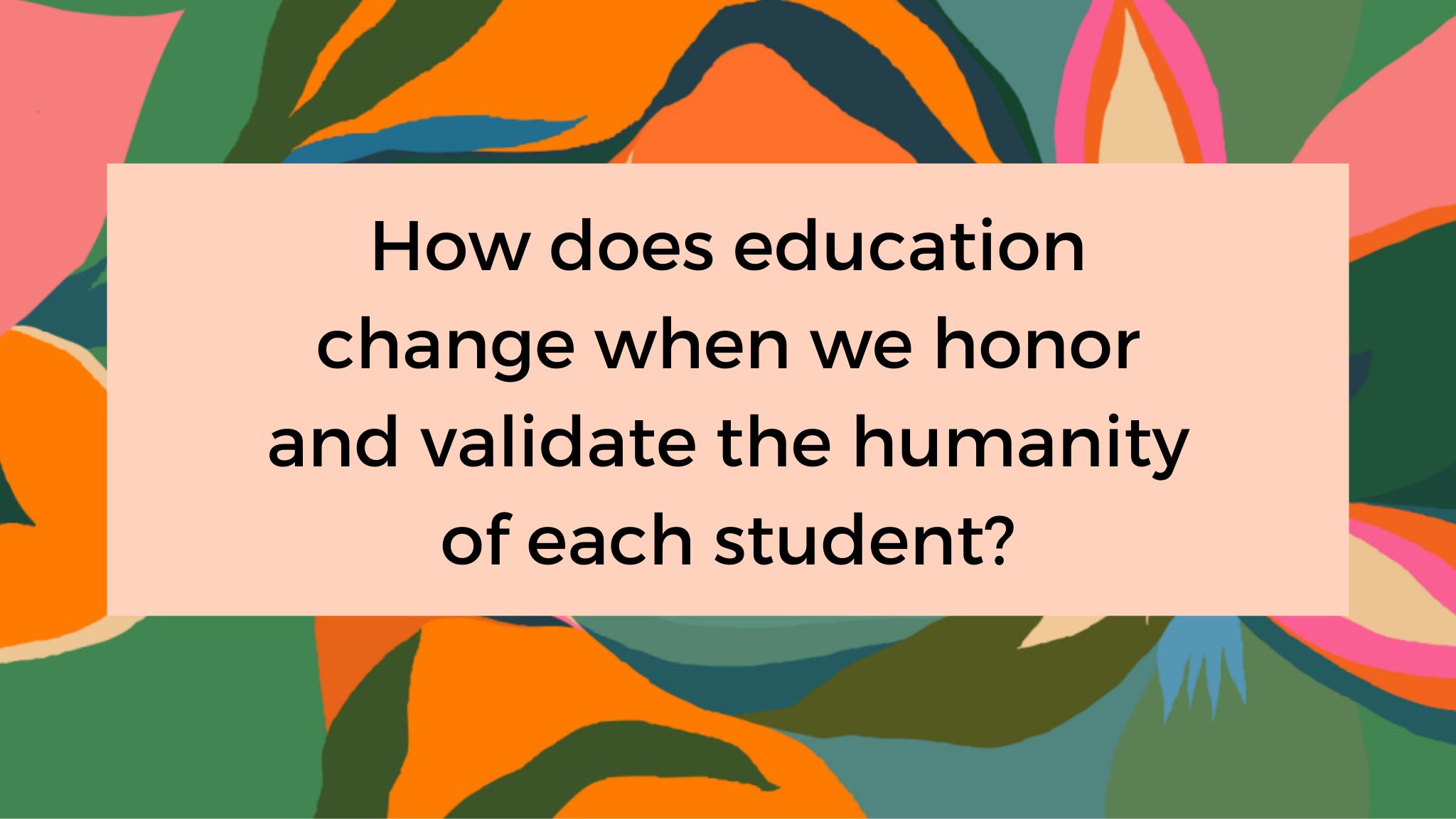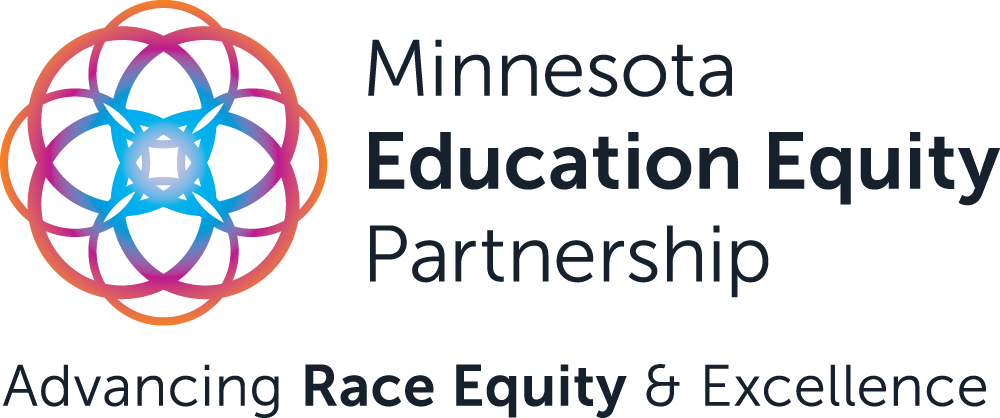
Why educators and students need Culturally Validating Pedagogy
In the spring of 2020, I was asked to provide a keynote for the National Urban Alliance Summer Institute. As I was preparing for the opportunity, I was deeply moved to find that what teachers (whom I love) needed was a space of healing, liberation, and empowerment.
The demands of the teaching profession to meet ALL students’ needs seemed to not only be constantly politicized but at times unobtainable for many.
As a person who has dedicated my professional life to educational excellence and equity, I recognized that American pedagogy had always been rooted in a historically white institutionalized framework.
And despite the tremendous work of countless scholars, including some of my personal heroes like Dr. Geneva Gay and Dr. Gloria Ladson-Billings, there still remained what seemed to be not only an educational debt reinforced through American pedagogy but also no real understanding of how to systematically love teachers and equip them with an authentic approach that would allow them to fulfill their vocation and meet the needs of EACH student.
It became ridiculously obvious to me that what needed to shift was pedagogy itself.
Understanding the “purpose” of education
Back in 2009, I had been given several tools including the CLEAR Model that outlined what I finally came to understand as Culturally Validating Pedagogy (CVP). However, it wasn’t until the summer of 2020 that I coined the phrase at the NUA Summer Institute.
A primary distinction of CVP begins with the understanding that pedagogy has three general areas that must be fully recognized as critical elements of pedagogy: Environment, Instruction, and Content.
Throughout my career in education, I have observed a strong emphasis on instruction and content, but rarely have I experienced an understanding of pedagogy that included all three components, often leaving out the environment.
In addition, the very purpose of education had to be addressed. I will never forget the first day of my doctoral program when I was told that the purpose of education was to convert the individual into a citizen.
I understand each system has its own versions of vision, mission, and values but as long as the actual final product of education was connected to conforming people into some predetermined identity of what it means to be fully human, or in political language a full American, we would never be able to actually educate a person without on some level denouncing their very essence.
A glaring historical example of this can be found in American Indian education. The original motto offered around educating American Indians in this country was to “kill the Indian and save the man.”
That said, as long as this type of ideology provides the underpinning of American pedagogy there is no hope. This approach in some ways literally contributed to genocidal efforts to remove ethnic and racial diversity.
Education had become a weapon of mass destruction used to ethnically cleanse our country and for anyone that did not fit into the ideal concept of an American Citizen.
The building blocks of Culturally Validating Pedagogy
Regardless of the efforts to be responsive or relevant, this was still an attempt to appeal to those who had been marginalized through the historically White institutions of education. And worse yet we were using good-hearted people, our educators, to carry out this assault on humanity.
So in 2020 I offered the term Culturally Validating Pedagogy (CVP). It is rooted in changing the purpose of education and aligns well with the concept offered by Fiere, “Through proper education, individuals transform themselves as learners, which provides themselves with the necessary tools to bring about radical structural changes that support a democratic lifestyle and equitable solutions.”
It is with this backdrop that I offer the CLEAR Model as the 5 building blocks of CVP:
Cultural
Emphasizes the human purpose of what is being learned and its relationship to the student’s own culture.
Learning
Encourages students to make choices in content and assessment methods based on their experiences, values, needs, and strengths.
Equitable
Respectful learning environments in which students’ racial, social, linguistic, ethnic, and cultural diversity is valued and contributes to the learning experience.
Achievement
Includes multiple ways to represent knowledge and skills and allows for the attainment of outcomes at different points in time.
Responsive
Through positive relationships, vigorous learning experiences are created involving higher-order thinking and critical analysis used to address relevant, real(ness) world issues in an action-oriented manner.
When the purpose of education is shifted to align with a concept more closely related to Fiere and teachers are supported through the 5 building blocks of the CLEAR Model, they are equipped to fulfill their vocation. This leads to a transformational shift that addresses all 3 areas of pedagogy (Environment, Instruction, and Content) and requires a focus on EACH student rather than the norming process of ALL.
When using the CLEAR Model, educators are able to literally validate the humanity of their students rather than requiring them to become someone or worse, something they are not.
Honoring the worthiness and wholeness of each student
Education must shift to CVP if we will ever meet the needs of our educators and students alike.
Merriam-Webster’s Dictionary provides this as one of the definitions of “validate”: to recognize, establish, or illustrate the worthiness or legitimacy of
CVP connects to human purpose because it recognizes the worthiness and wholeness of the person in their full beauty as a racial, ethnic, and cultural person. CVP ratifies their identity including gender and sexual orientation as legitimate, without needing to alter it in any way.
Through utilizing the 5 building blocks of the CLEAR Model, environments change that corroborate with humanity and voice the richness of the people they serve. Ultimately, the process of CVP is the pedagogical method that grants official sanction for diversity in our educational institution leading to the legitimacy of EACH person.
Lastly, I will offer the words of Sitting Bull.
“If the Great Spirit had desired me to be a White man he would have made me so in the first place. He put in your heart certain wishes and plans; in my heart, he put other and different desires. Each man is good in the sight of the Great Spirit. It is not necessary for Eagles to be Crows.”
CVP requires a shift that values both the crow and the eagle and validates each of their identities as whole.
CVP provides a CLEAR approach that liberates both teachers and students to be who they are in their unique beauty allowing them to use what they have learned to engage in higher-order thinking and critical analysis used to address relevant, real(ness) world issues in an action-oriented manner.

Dr. Rev Hillstrom is one of this country’s foremost Indigenous scholars leading systemic change for educational excellence and equity. Through the pillars of the CLEAR model (Culture, Learning, Equitable, Achievement and Responsive) he guides systems in generating the equity consciousness needed for conceptual, behavioral and structural transformation.
